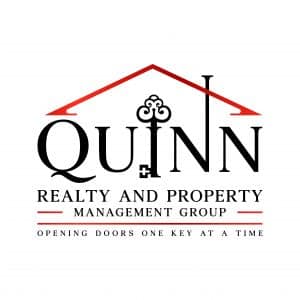Discover Quinn Realty and Property Management Quality Today
Discover Quinn Realty and Property Management Quality Today
Blog Article
Optimizing Residential Property Administration Operations for Long-Term Productivity and Occupant Retention

Efficient Communication Techniques
Effective and clear interaction makes certain that all stakeholders, consisting of residential property owners, occupants, maintenance team, and monitoring, are on the exact same web page, leading to smoother procedures and raised lessee complete satisfaction. Property supervisors must clearly detail lease terms, maintenance procedures, and interaction networks to stay clear of misconceptions down the line.
Using modern technology can also substantially improve interaction efficiency in residential or commercial property management. Applying building administration software that permits real-time updates, automated notices, and simple paperwork can streamline interaction processes and improve overall operational effectiveness. In addition, routine interaction through numerous channels such as e-mail, telephone call, and in-person meetings can assist foster positive relationships with tenants and deal with any kind of problems without delay.
Modern Technology Combination for Upkeep
In the realm of residential property management optimization, a vital component that improves operational efficiency and upkeep processes is the combination of modern technology for enhancing maintenance jobs. By including innovation into upkeep operations, residential property managers can benefit from improved job order administration, positive maintenance scheduling, and enhanced interaction with upkeep groups and lessees.
One considerable advantage of modern technology integration in upkeep is the capacity to systematize job orders and track upkeep requests digitally. This enhances the process of getting, assigning, and completing upkeep tasks, causing quicker action times and enhanced lessee contentment. Predictive upkeep innovations can help in identifying prospective issues before they rise, lowering the probability of expensive repair services and minimizing downtime.

Data-Driven Choice Making
Utilizing data-driven understandings encourages home managers to make educated decisions that maximize functional effectiveness and take full advantage of possession efficiency. Quinn Realty and Property Management. By leveraging data analytics devices and technologies, property supervisors can draw out important details from various sources such as renter responses, upkeep records, and market patterns. This data can supply important understandings into occupant preferences, functional bottlenecks, and cost-saving possibilities
Data-driven decision-making makes it possible for building supervisors to identify patterns and fads that may not be noticeable through traditional observation. Analyzing maintenance information may expose recurring concerns in particular systems, enabling supervisors to proactively resolve underlying problems and prevent future expensive fixings. Furthermore, by monitoring renter fulfillment metrics and lease revival rates, property supervisors can customize their solutions to fulfill lessee expectations, inevitably boosting tenant retention and lasting profitability.
Furthermore, data-driven understandings can additionally inform calculated financial investment decisions by highlighting areas for renovation or growth based upon market demand and efficiency metrics. On the whole, incorporating data-driven decision-making procedures into residential property monitoring procedures can result in extra effective source allotment, enhanced occupant satisfaction, and enhanced earnings over time.
Tenant Satisfaction Efforts
Drawing insights from data-driven decision-making, residential property supervisors can implement targeted renter fulfillment campaigns to enhance general leasing experiences and foster lasting renter connections. By understanding renter preferences and pain points, residential property supervisors can customize their services to fulfill the details requirements of their tenants, inevitably bring about higher fulfillment degrees and enhanced tenant retention rates.
One reliable renter fulfillment effort is to establish clear lines of communication with renters to address any kind of problems immediately. Normal comments surveys can additionally provide valuable understandings right into lessee fulfillment degrees and locations for enhancement. Residential property managers can use this responses to make essential adjustments and reveal occupants that their opinions are valued.

Moreover, arranging neighborhood events and features that accommodate the passions of occupants can produce a sense of belonging and improve overall contentment. By cultivating a interesting and favorable community atmosphere, property supervisors can strengthen occupant connections and encourage long-lasting leases, eventually improving why not find out more success and tenant retention in the long run.
Simplifying Functional Processes
Performance is critical in building management, demanding the optimization of functional processes to improve productivity and optimize sources. Improving operational procedures page entails determining areas for enhancement, getting rid of redundancies, and executing systems that enhance overall effectiveness. One key facet of enhancing operational processes is the combination of innovation remedies such as building management software program, which can automate jobs, enhance interaction, and give real-time data understandings. By digitizing procedures like upkeep requests, lease collection, and lease renewals, residential property managers can save time, lower mistakes, and boost occupant complete satisfaction.
In addition, applying standardized treatments and workflows can aid produce uniformity throughout residential properties, minimize complication, and simplify day-to-day operations. Consistently assessing and enhancing these processes is necessary to adjust to altering market problems, renter requirements, and regulatory needs. By constantly looking for ways to enhance functional processes, residential property managers can not only enhance their very own effectiveness but likewise supply better solutions to occupants, ultimately leading to long-lasting earnings and renter retention.
Verdict
To conclude, optimizing building monitoring procedures with efficient communication, modern technology integration, data-driven decision production, lessee fulfillment initiatives, and streamlining processes is essential for lasting profitability and occupant retention. By carrying out these strategies, property managers can boost operational performance, decrease prices, and enhance lessee contentment, eventually bring about enhanced earnings and occupant commitment. It is important for residential property administration business to continuously examine and adjust their procedures to satisfy the developing needs of both occupants and the marketplace.
Efficient and clear interaction makes sure that all stakeholders, consisting of property owners, renters, upkeep personnel, and monitoring, websites are on the exact same web page, leading to smoother operations and increased renter satisfaction - Quinn Realty and Property Management. By monitoring renter contentment metrics and lease revival rates, residential property supervisors can tailor their solutions to satisfy occupant assumptions, ultimately improving renter retention and long-term earnings
By continually looking for methods to simplify functional procedures, building supervisors can not just enhance their own performance but additionally deliver much better solutions to occupants, ultimately leading to long-term success and tenant retention.
In verdict, enhancing residential property management operations via efficient interaction, innovation integration, data-driven choice production, renter contentment campaigns, and simplifying processes is vital for lasting earnings and occupant retention (Quinn Realty and Property Management). By applying these techniques, residential or commercial property managers can enhance functional efficiency, reduce prices, and improve lessee contentment, eventually leading to boosted success and lessee loyalty
Report this page